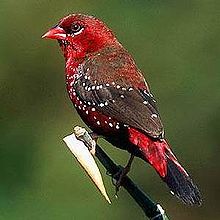Javan Munia or White Bellied Munia for Sale Sydney
Lonchura leucogastraNatural Distribution and Habitat
Native to Thailand and the islands of Sumatra they inhabit grassy areas, cultivated areas and rice paddies.
Diet for the Javan Munia
Seed– feed your Munias a good quality finch mix which is necessary if you want good breeding success. Be wary of some supermarket mixes as may contain a low grade seed mix with fillers. If you are unsure of the seed you are using ask your local bird expert.
Sprouted seed– a great addition to your birds diet to sprout your own seeds see finch care sheet
Millet sprays– a fresh seed still on the stem french white or pannicum millet sprays is good for this species.
Greens– very important for Javan munias supply seeding grasses, silver beet, chickweed, endive and cucumber.
Live food– is necessary during the breeding season, supply meal worms and fly pupae with a couple of pinches of insectivore mix.
Egg and biscuit formula– a great protein source should be supplied regularly and especially during the breeding season. This can be added to the above live food mix.
Grit– feed a good quality fine grit mix containing baked egg shell, charcoal, shell, crushed cuttlebone and limestone.
Breeding the Javan Munia
breeding from september to march they will nest in cane wicker nests, coconut husks and half open nest boxes. Make sure nesting material is supplied such as swamp grass and soft white feathers. The hen will lay around 5 white eggs with an incubation period of 14 days. The chicks will fledge at 3 weeks of age but will still not feed for them self for a further 4 weeks. Do not remove young until they are no longer being fed by the parent birds.
Sexing Javan Mannikin’s
Difficult to sex like most mannikins the male has a larger more broad lower mandible.
More information coming soon.


